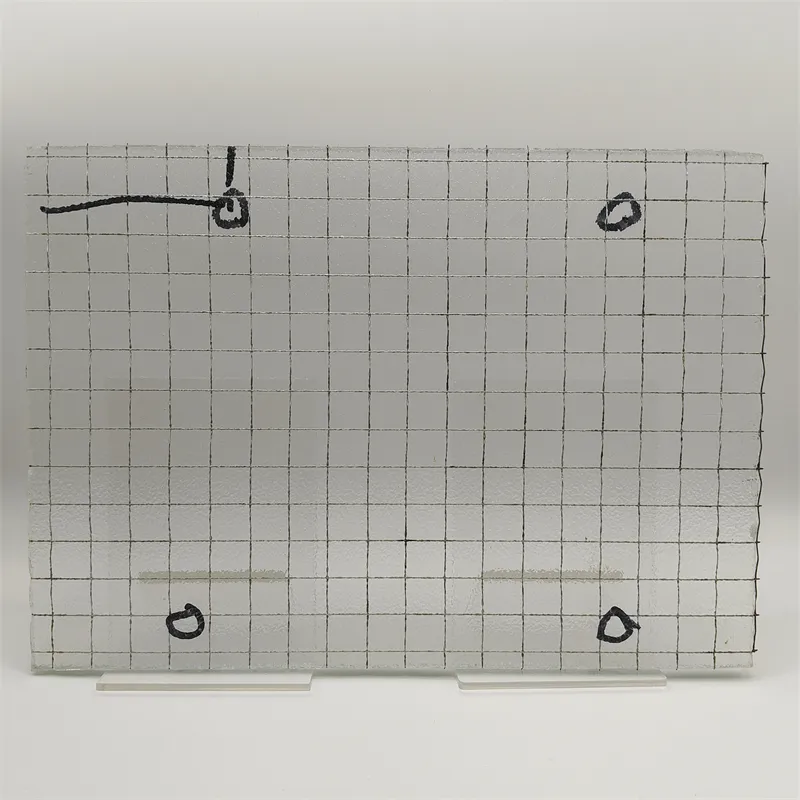Nov . 06, 2024 00:04 Back to list
Benefits and Features of Tempered Glass Panels for Modern Design Solutions
Understanding Tempered Glass Panels A Comprehensive Guide
Tempered glass panels have become increasingly popular in various industries, including construction, furniture design, and automotive manufacturing. Renowned for their strength and safety features, tempered glass panels provide an appealing balance of aesthetics and functionality, making them an ideal choice for a wide range of applications.
What is Tempered Glass?
Tempered glass, also known as toughened glass, is made through a special process that involves heating and then rapidly cooling the glass. This tempering process increases the glass's strength compared to standard glass, allowing it to withstand greater stress and thermal fluctuations. It is about five to ten times stronger than untreated glass, making it a preferred material for environments that demand durability and resistance.
The Manufacturing Process
The production of tempered glass involves several key steps. First, high-quality float glass is cut into panels of the desired size. Then, the glass is heated in a large chamber to temperatures exceeding 600 degrees Celsius. After reaching the necessary temperature, the glass is rapidly cooled using a process called quenching. This sudden temperature change creates compressive stresses on the glass surface, which enhances its strength and stability.
The tempering process is also what grants the glass its safety characteristics. When broken, tempered glass shatters into small, blunt pieces rather than sharp shards, reducing the risk of injury. This quality makes it ideal for use in environments where safety is a priority, such as shower enclosures, glass doors, and facades of commercial buildings.
Applications of Tempered Glass Panels
tempered glass panels

Tempered glass panels find applications in numerous fields due to their beneficial characteristics
. In construction, they are often used for1. Windows and Facades Many modern buildings feature large glass windows that offer a sleek appearance while providing natural light. Tempered glass is perfect for this application due to its ability to withstand wind pressure and extreme weather conditions.
2. Shower Doors Tempered glass is a popular choice for shower enclosures because it can resist thermal stress and is less likely to shatter when exposed to changing temperatures, such as hot water.
3. Balustrades and Railings For safety and aesthetic appeal, tempered glass panels are frequently used in balconies and staircases, providing an unobstructed view while ensuring structural integrity and safety.
4. Furniture Design Many trendy and modern furniture pieces incorporate tempered glass surfaces, such as coffee tables and shelving units. Its scratch resistance and visual appeal make it an attractive choice for designers.
5. Automotive Tempered glass is commonly used in vehicle windows, as it offers enhanced safety for passengers while maintaining a sleek look.
Conclusion
In conclusion, tempered glass panels represent a significant advancement in glass technology, offering unparalleled strength, safety, and versatility. Their unique manufacturing process not only fortifies the material but also contributes to its aesthetic value. Whether utilized in commercial buildings, residential homes, or automotive applications, tempered glass panels continue to shape our environment and improve the quality of everyday objects. As design trends evolve and safety regulations become stricter, the demand for tempered glass is likely to grow, emphasizing the importance of this remarkable material in contemporary construction and design.
-
Safety and Style with Premium Laminated Glass Solutions
NewsJun.24,2025
-
Reinvents Security with Premium Wired Glass
NewsJun.24,2025
-
Premium Float Glass Line for Modern Architecture
NewsJun.24,2025
-
Low Emissivity Glass for Energy-Efficient Architecture
NewsJun.24,2025
-
High-Performance Insulated Glass Solutions for Modern Architecture
NewsJun.24,2025
-
Elevates Interior Style with Premium Silver Mirror
NewsJun.24,2025
Related PRODUCTS














